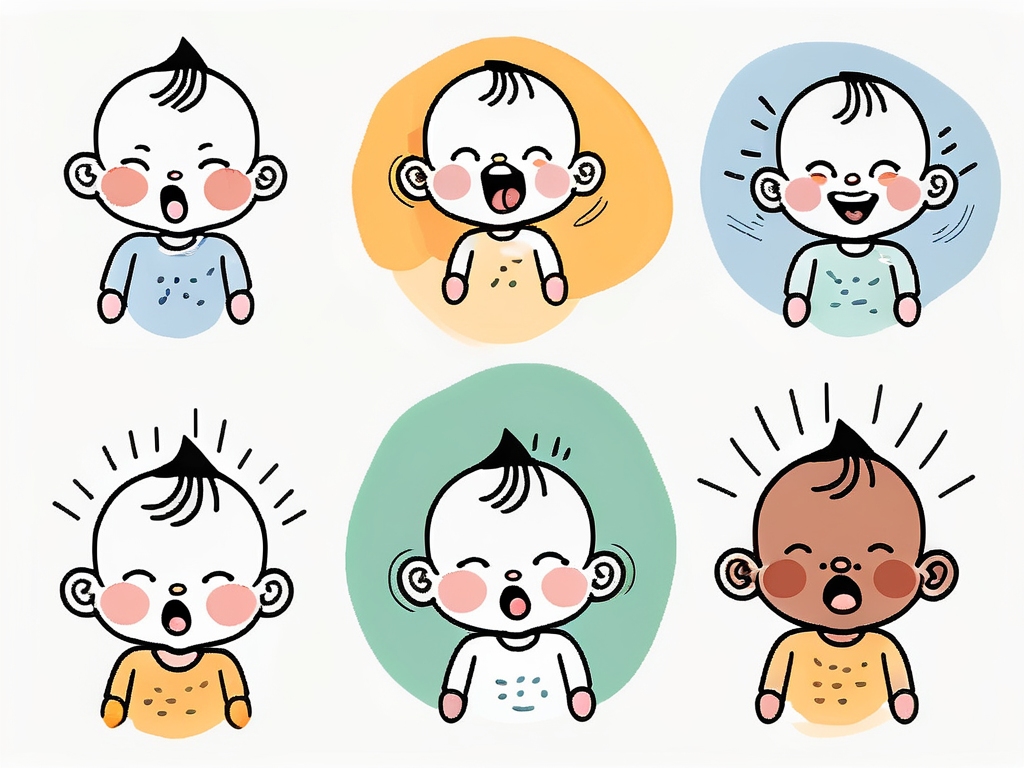Babies communicate through crying, and understanding their cries can be a challenge for new parents. However, by decoding their cries, parents can better meet their needs and provide comfort. In this article, we will explore the three types of baby cries and offer tips for new parents on how to respond effectively.
Understanding Baby Communication
Baby cries are an essential form of communication. Crying is how newborns express their needs, wants, and discomfort. By paying close attention to the different cries, parents can decipher what their baby is trying to communicate.

Aside from crying, babies also communicate through various other cues such as facial expressions, body movements, and sounds. For example, a baby may coo or babble when they are content and happy, while they may arch their back or turn away when they are overstimulated or tired. Understanding these different forms of communication can help parents respond effectively to their baby’s needs.
The Importance of Decoding Baby Cries
Decoding baby cries is crucial for understanding their needs and providing appropriate care. When parents learn to identify the specific cries, they can respond promptly, which promotes their baby’s well-being and strengthens the parent-child bond.
It’s important for parents to remember that each baby is unique, and their communication cues may vary. Some babies may have a more subtle way of expressing their needs, while others may be more vocal. By being attuned to their baby’s individual communication style, parents can build a stronger connection with their little one.
The Language of Newborns
Newborns have different types of cries, each with its own distinct characteristics. By familiarizing themselves with these cries, parents can decipher their baby’s needs more easily.
In addition to cries, newborns also communicate through body language. They may root for a breast when hungry, clench their fists when upset, or make sucking motions when they need comfort. Understanding these non-verbal cues alongside their cries can provide a more comprehensive understanding of what the baby is trying to convey.
The First Type of Baby Cry: Hunger
One of the most common reasons for a baby to cry is hunger. Identifying hunger cries can help parents respond promptly and ensure the baby receives the necessary nourishment.

It’s important to note that hunger cries can vary in intensity and tone depending on the baby’s age and individual temperament. Newborns, for example, may have more subtle hunger cues compared to older infants who might cry more vigorously when hungry.
Identifying Hunger Cries
Hunger cries are usually short, low-pitched, and rhythmic. They may be accompanied by sucking or rooting movements. These cries often intensify over time and are usually followed by feeding cues such as lip-smacking or sucking on fingers.
Additionally, some babies may display early hunger cues before crying, such as increased alertness, putting hands to mouth, or turning their head to seek the breast or bottle. Recognizing these subtle signs can help caregivers respond proactively to prevent full-blown hunger cries.
Responding to Hunger Cries
When a baby cries from hunger, it is essential for parents to respond promptly. Offering the breast or a bottle and ensuring a comfortable feeding position can help satisfy their hunger and provide comfort.
It’s also crucial for caregivers to create a calm and nurturing environment during feeding times. Dimming lights, minimizing noise, and maintaining eye contact with the baby can enhance the bonding experience and promote healthy feeding habits.
The Second Type of Baby Cry: Discomfort
Another type of cry babies use to communicate is the discomfort cry. By recognizing these cries, parents can help address the underlying cause of their baby’s discomfort.

Understanding a baby’s cries is crucial for caregivers as it helps in providing timely and appropriate care. Discomfort cries are a way for babies to express their unease or pain when something is bothering them physically.
Recognizing Discomfort Cries
Discomfort cries are usually characterized by a high-pitched, whiny sound. The baby may exhibit signs of physical discomfort, such as arching their back or pulling their legs towards their chest. These cries often persist until the cause of the discomfort is resolved.
It’s essential for parents to pay close attention to the different nuances in their baby’s cries to accurately identify whether it’s a discomfort cry or a cry indicating another need, such as hunger or fatigue. This attentiveness can help in providing prompt relief to the baby.
Alleviating Discomfort in Babies
To alleviate their baby’s discomfort, parents can try various soothing techniques. This may include changing the baby’s diaper, adjusting their clothing to maintain a comfortable temperature, or providing gentle massages to ease any tension.
In addition to these methods, creating a calm and quiet environment for the baby can also help in reducing their discomfort. Dimming lights, playing soft music, or swaying gently with the baby in a rocking chair are all ways to create a soothing atmosphere that can aid in comforting the baby.
The Third Type of Baby Cry: Sleepiness
Babies also cry when they are tired and in need of rest. Recognizing the signs of sleepiness cries enables parents to create a conducive environment for their baby to sleep.
Understanding a baby’s sleep cues is crucial for establishing healthy sleep patterns. Sleepiness cries may vary in intensity and tone, often sounding more whiny or fussy compared to other cries. It’s essential for parents to pay attention to these subtle differences to respond effectively to their baby’s needs.
Signs of Sleepiness Cries
Sleepiness cries may be accompanied by rubbing their eyes, yawning, or demonstrating slower movements. Recognizing these signs can help parents initiate a soothing bedtime routine to help their baby fall asleep.
In addition to physical cues, babies may also exhibit behavioral signs of sleepiness, such as becoming more clingy or irritable. These cues can serve as important indicators for parents to start winding down activities and prepare their baby for sleep.
Soothing a Sleepy Baby
To soothe a sleepy baby, parents can create a calming environment by dimming lights, playing soft music or white noise, and using gentle motions such as rocking or swaying. Establishing a consistent bedtime routine can also help signal the baby that it’s time to sleep.
It’s important for parents to be patient and understanding when soothing a sleepy baby. Every baby is unique, and what works for one may not work for another. Experimenting with different soothing techniques and observing how the baby responds can help parents find the most effective way to lull their little one to sleep.
Tips for New Parents
Becoming a new parent can be overwhelming, especially when faced with a crying baby. Here are some tips to help parents navigate this challenging but rewarding journey.
Keeping Calm During Crying Episodes
It is essential for parents to remain calm during crying episodes. Taking deep breaths, seeking support from partners or loved ones, and reminding oneself that crying is a normal part of a baby’s development can help parents stay composed and better understand their baby’s needs.
Moreover, creating a soothing environment can also help calm both the baby and the parent. Soft music, gentle rocking, or a warm bath can sometimes help alleviate a baby’s crying. Additionally, ensuring that the baby is not hungry, tired, or in need of a diaper change can prevent unnecessary distress.
When to Seek Medical Advice
While most baby cries are a normal part of their development, there are instances when seeking medical advice is necessary. If a baby’s cry sounds different or unusual, if they have a high fever, or if there are other concerning symptoms, it is important to consult a healthcare professional for guidance.
Furthermore, keeping track of the baby’s feeding, sleeping, and diaper changing patterns can provide valuable information for healthcare providers. Any sudden changes in these routines could indicate an underlying issue that requires medical attention.
In conclusion, understanding the three types of baby cries can greatly assist new parents in meeting their baby’s needs effectively. By recognizing hunger cries, discomfort cries, and sleepiness cries, parents can respond promptly and provide the necessary care and comfort.
Remember, becoming attuned to your baby’s cries takes time and practice, but with patience and observation, you will become an expert in understanding and responding to your little one’s needs.











